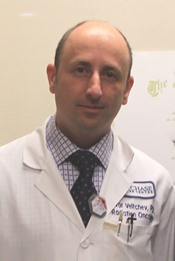Program Information
Transition Form CT-Based to Ultrasound-Based HDR Treatment Planning for Prostate Cancer
I Veltchev*, R Price , E Horwitz , C Ma , Fox Chase Cancer Center, Philadelphia, PA
Presentations
SU-F-T-34 (Sunday, July 31, 2016) 3:00 PM - 6:00 PM Room: Exhibit Hall
Purpose:
We discuss our experience with the transition from CT-based to ultrasound-based HDR treatment planning for prostate cancer in a high-volume clinical setting. The details of switching from one afterloader vendor to another are also discussed. The four main stages of prostate HDR planning (image acquisition, target delineation, needle reconstruction, and plan optimization) are significantly modified when ultrasound imaging is used.
Methods:
We employ a time-efficient needle reconstruction procedure that provides the necessary level of accuracy to rival the traditional CT-based method. A total of 80 consecutive prostate treatments are part of this comparative study: 40 CT-based and 40 ultrasound-based. Various dosimetric parameters are investigated as points of comparison: target DVH points (V100, V150, V200) and dose non-homogeneity ratio (DNR). An ultrasound-guided peripheral needle-placement strategy with two central needles is maintained for both groups of patients. Any differences in plan quality can therefore be attributed to target delineation, accuracy of needle reconstruction, and plan optimization capabilities of the two planning systems.
Results:
Statistical analysis of the dosimetric end-points suggests that as a result of the implementation of ultrasound planning, target delineation consistency was improved; target volumes were reduced, leading to lower normal tissue dose while consistently improving all dosimetric parameters (DNR is reduced by ~4%) as compared to the CT-based treatment work-flow.
Conclusion:
The introduction of ultrasound-based real-time treatment planning significantly reduced the operating room time for all patients - from 4 hours to 2.5 hours, allowing us to double the patient load in a single 5 hour slot. Dosimetric quality of the plans was only slightly improved after the switch to ultrasound planning. Reproducibility however, saw the greatest improvement, eliminating the needle position uncertainties associated with the addition of a CT scan.
Contact Email:

